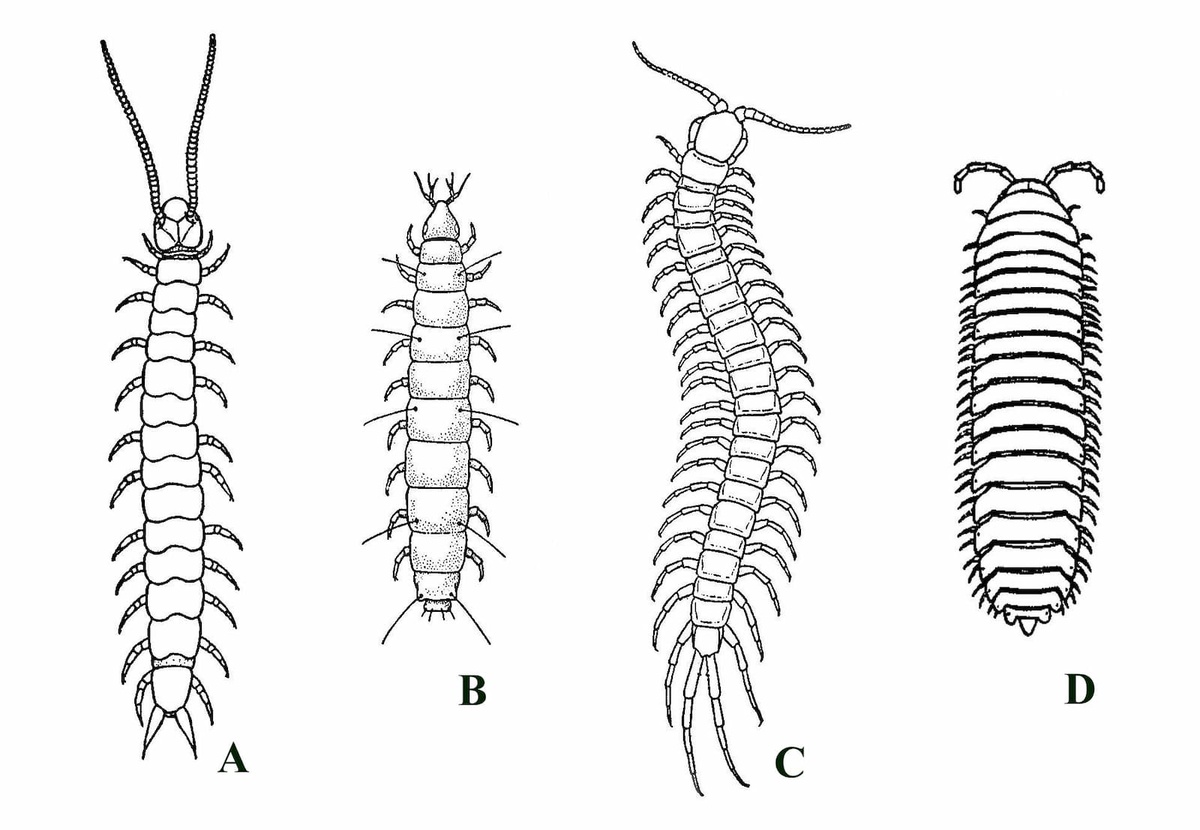Fossils of a group of arthropods called the Myriapoda have also been discovered in the Rhynie chert. Myriapods lack external gills, instead they possess an internal tube-like respiratory system called the tracheae, a feature that has enabled the group to pervade the terrestrial environment. The myriapods are distinguished from other mandibulate ('jawed') arthropods by their large number of legs and also the fact that these animals are divided into two parts, a distinct body and head. Myriapods include the extant centipedes, millipedes and the tiny litter-dwelling symphylans and pauropods (see inset below), and also some enigmatic extinct forms such as the arthropleurids.

- Fossil Record
-
Myriapods have a very sparse fossil record, primarily a reflection of the environments in which they live and the poor preservation potential of their non-mineralised exoskeletons. The earliest myriapod-like fossils recorded are from Cambrian marine deposits.
Possible myriapod burrows are also recorded from the Late Ordovician. However, the first unequivocal terrestrial myriapod fossils are millipedes (Archidesmids) recorded from Mid Silurian rocks of Scotland ( Wilson & Anderson 2004). Other terrestrial myriapods (including centipedes and arthropleurids) are recorded from rocks of the Late Silurian of Shropshire, UK (e.g.: Jeram et al. 1990, Shear & Selden 1995).
Cenozoic examples are known primarily from Oligocene amber. Mesozoic myriapod fossils are quite rare. In Palaeozoic rocks myriapods are quite well known from the Devonian and particularly the Carboniferous. To date a number of myriapodous arthropods have been discovered in the Rhynie chert and appear to have formed a significant component of the Early Devonian biota.
- Identity
-
Of the Rhynie myriapod material that has been described at least one is an unequivocal centipede, Crussolum sp. ( Anderson & Trewin 2003 ) whereas others are of, as yet, uncertain affinities.
Other new material that has been discovered more recently in the Windyfield chert is currently being described and when published will be added to these resource pages in due course. The new discoveries include at least one new species of centipede, and the first arthropleurids to be found at Rhynie!
Click on the hyperlinks below for images and brief descriptions of some of the animals described to date.
- Centipedes
- Myriapoda incertae sedis
